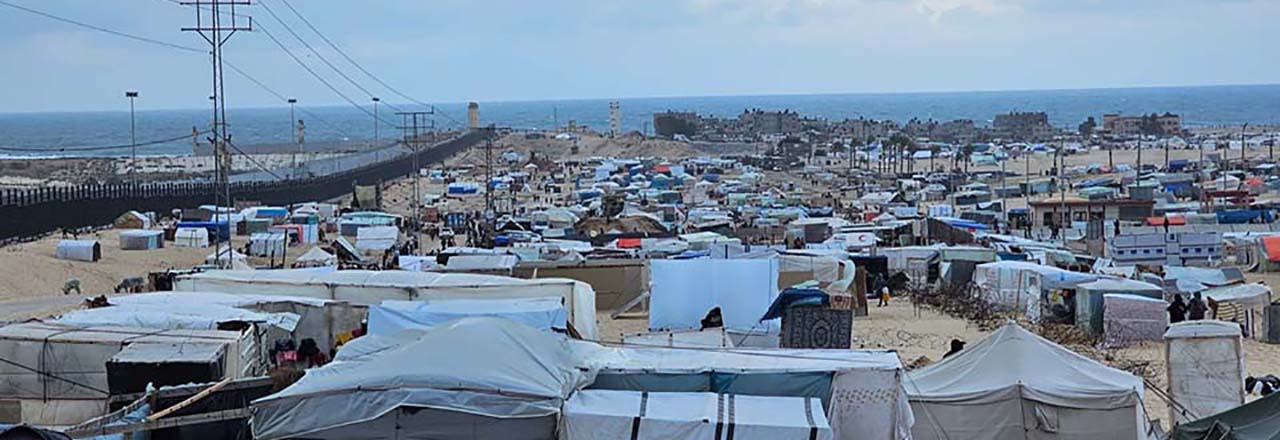

Reflections from the Holy Land
CRS President & CEO Sean Callahan shares insights from his visit to Gaza, Jerusalem, West Bank, Jordan and Egypt.
"The resilience of the people inspired me deeply and makes me think about how we can set an example for bringing people together."
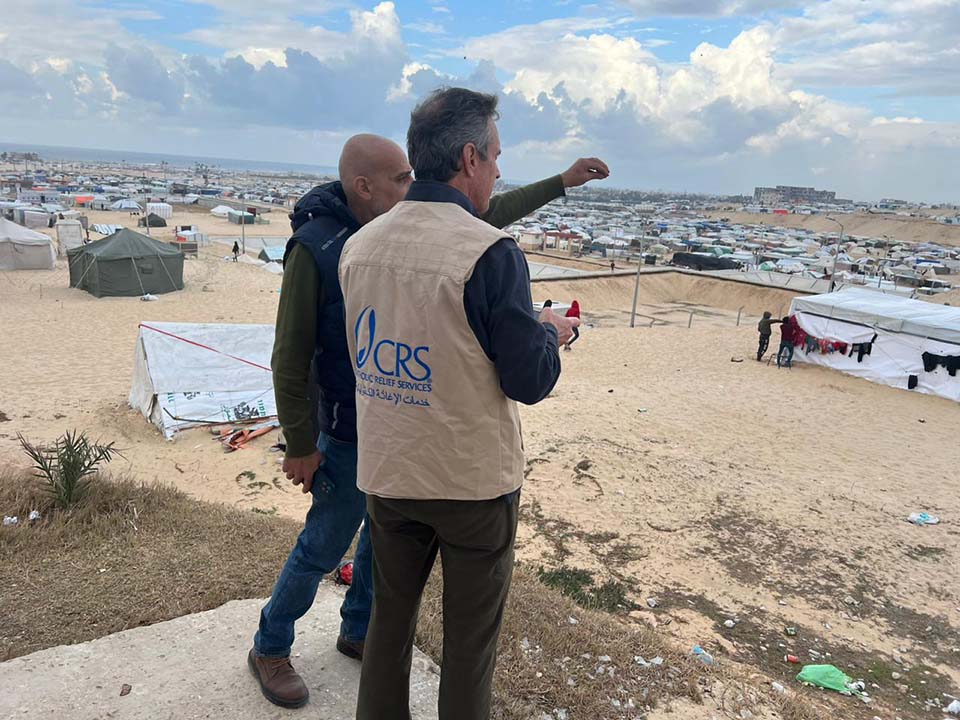
This week, I visited the Holy Land, to meet with the CRS team and partners in Jerusalem, West Bank, Gaza and across the region who have been responding to the humanitarian crisis that has been escalating since October 7. Before even departing Jerusalem for home, I wanted to share with you highlights from my visit and their work—so much of which you have made possible. I only wish you could all have been with me in person.
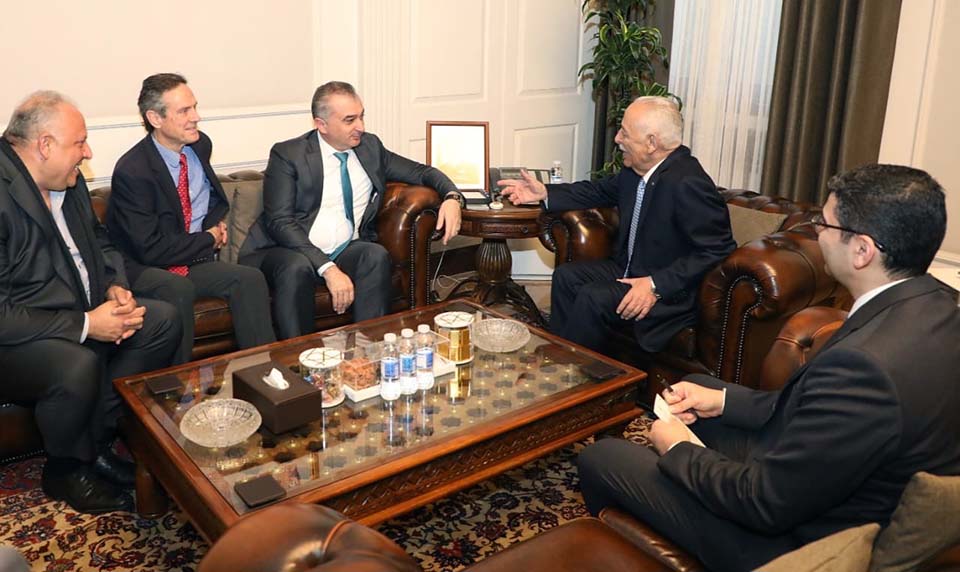
My trip began in Jordan, where I met with our longtime partner Caritas Jordan, as well as the Nuncio, representatives from the Royal Court and the Hashemite Charities, who have greatly supported us on logistics. Together, we discussed how our collective assistance can take on a more regional approach to address issues across the Holy Land.
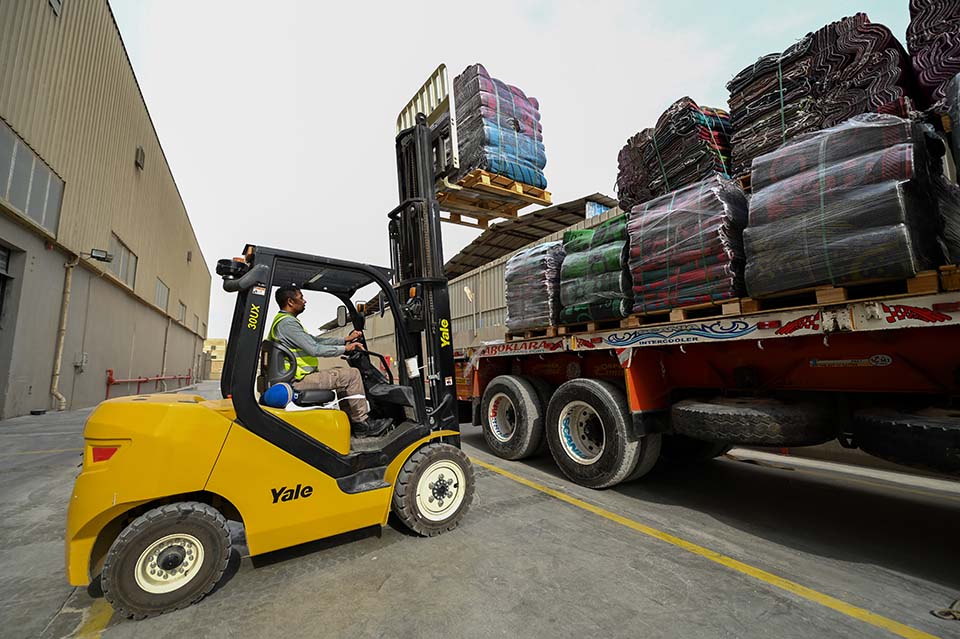
Next I traveled to Egypt, where I met with the Egyptian Bishop in Cairo, Caritas Egypt and CRS colleagues in Sudan who supporting efforts in Egypt to assist refugees. The CRS Egypt team has not only ramped up its programming to assist the increasing number of refugees from Sudan and the region, but they have also set up a pivotal logistics hub to provide lifesaving assistance to Gaza—which is where I was headed.
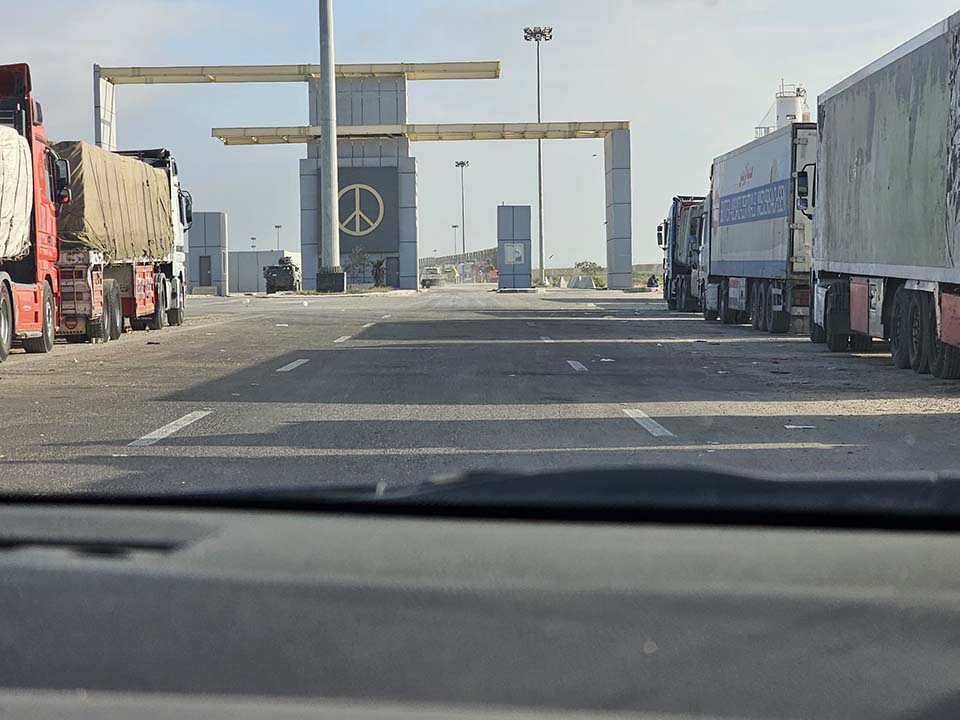
As we arrived at the border area, we were among hundreds of trucks waiting to enter Gaza—and we saw, painted on the Egypt gate, a peace symbol—a poignant reminder of why we were here. It would take 15 hours to cross through the gate, and I was eager to see my Gazan colleagues on the other side.
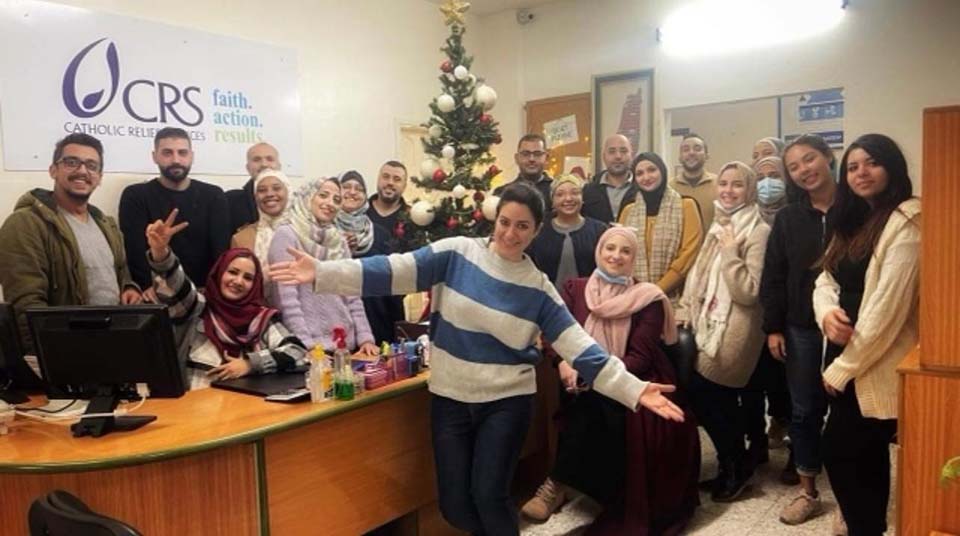
CRS has 45 Gazan staff members currently inside Gaza. I share this photo from before the war. Almost all my colleagues are now displaced from their homes—with many having been displaced multiple times. They are living in overcrowded shelters, in other people’s homes and even outside under a tarp or tent with winter weather upon them. Still, despite all the losses they have experienced, and the uncertainty they navigate daily, they have been providing assistance to people in even greater need. As one of my Gazan colleagues told me, “We cried for the first two weeks and then we went back to work. Doing things offers a sense of purpose.”
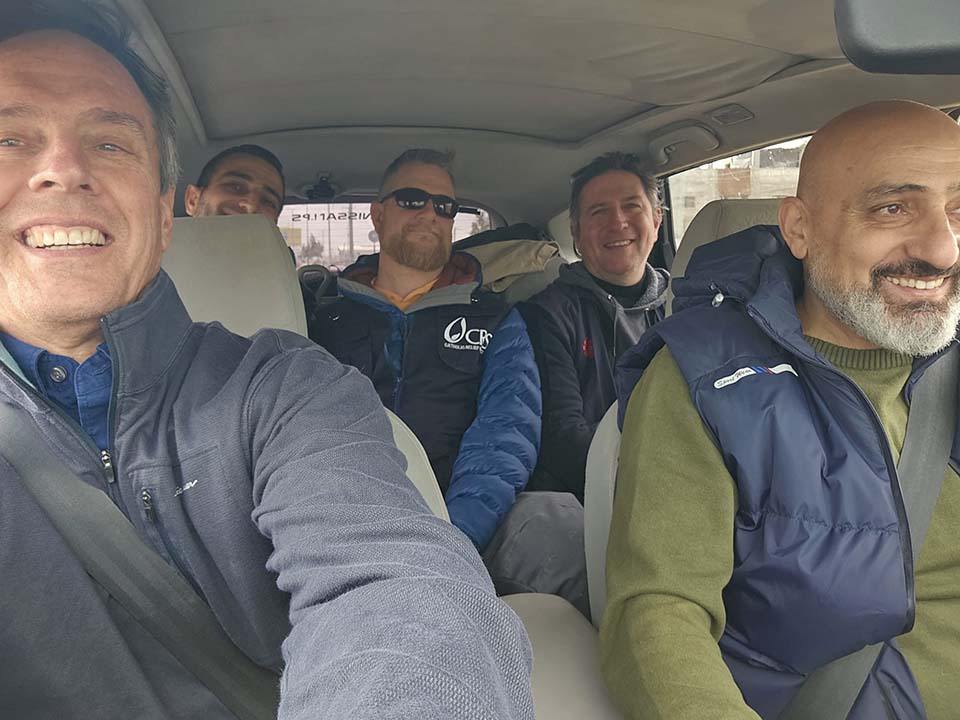
Two of my CRS Gazan colleagues greeted me upon arrival. Here you see CRS Gaza’s Head of Office, Bassam, in the driver’s seat, with field officer Shehda behind me and two of CRS’ emergency logisticians, Michael and John. That night, I would stay with Shehda’s family.
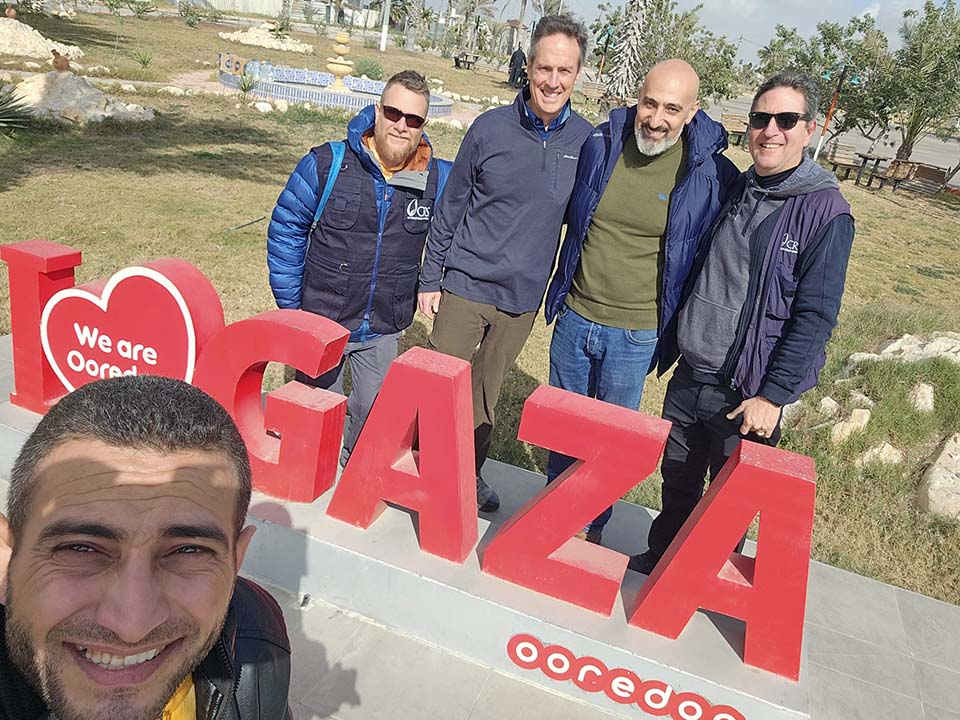
From the minute we arrived in Gaza, several people came up to us saying, "Welcome to Gaza! Thank you for coming!” Throughout my trip, I felt only welcome. I would later be asked by colleagues and family, “How were you feeling when you got in?” And, to tell you the truth, I felt secure the whole time.

We arrived at the new office, where Bassam gave us the lay of the land. It was immediately clear how Bassam and our Gaza team have built relationships that allow us to go places where others find it difficult. People are saying that assistance can’t take place in Gaza—that it’s too chaotic—but as you’ll see here, the provision of lifesaving aid is taking place thanks to dedicated, brave Gazans.

We also toured our new warehouse, adjacent to the office, that used to be a supermarket. CRS has distributed food, tarps and tents, bedding, hygiene supplies, and cash assistance to more than 100,000 people. The team has ensured all is organized and controlled so people are safe and understand the process.
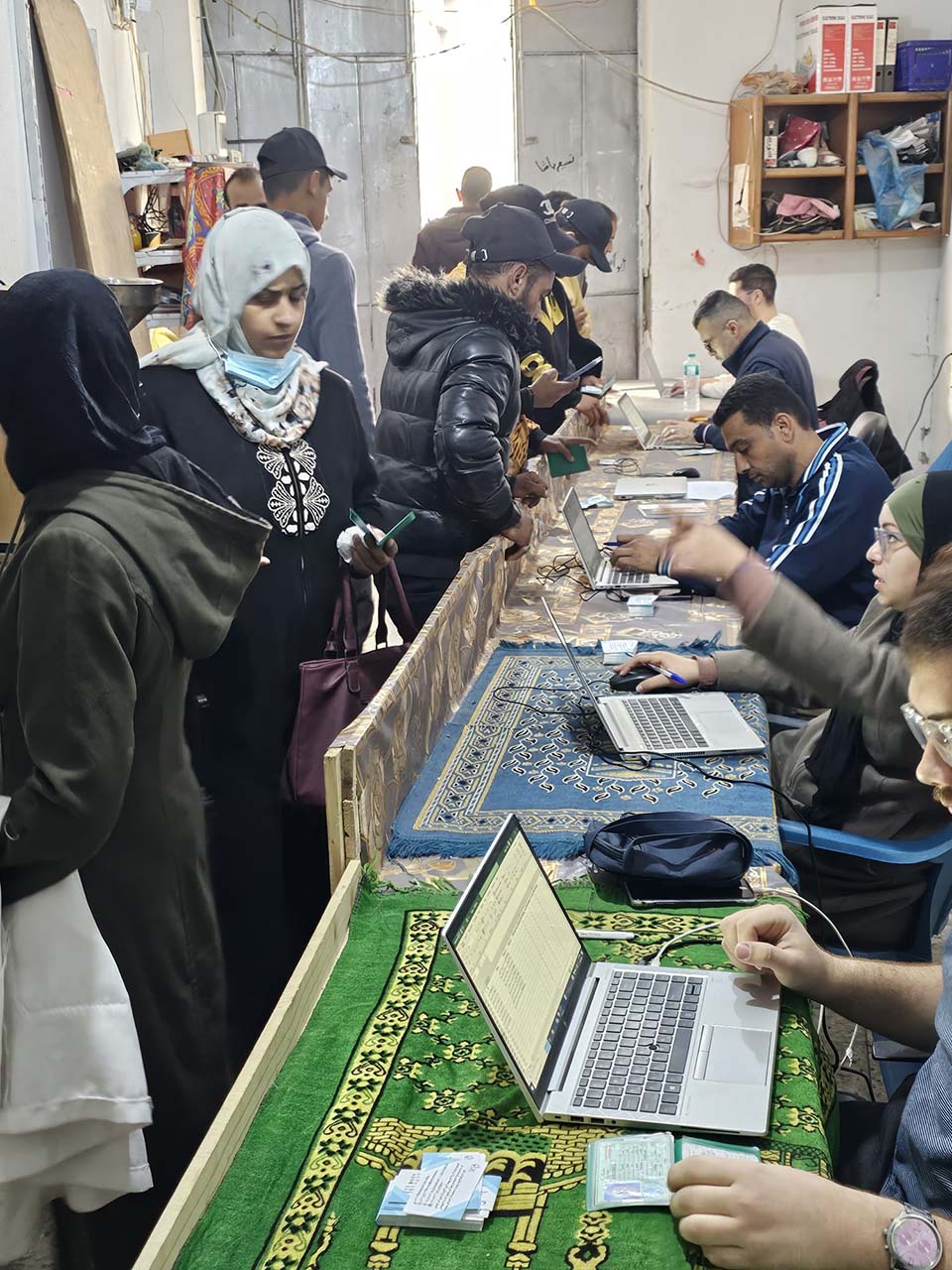
I’m proud to say that the CRS Gaza’s operations have expanded into two governates. The ability to respond quickly and efficiently is based on years of programming in Gaza, dedicated Gazan staff, and established vendor networks and financial operating systems. Even in this context, CRS has rigorous mechanisms to ensure accountability. This photo is of the registration process, during which people bring identification to register for assistance.
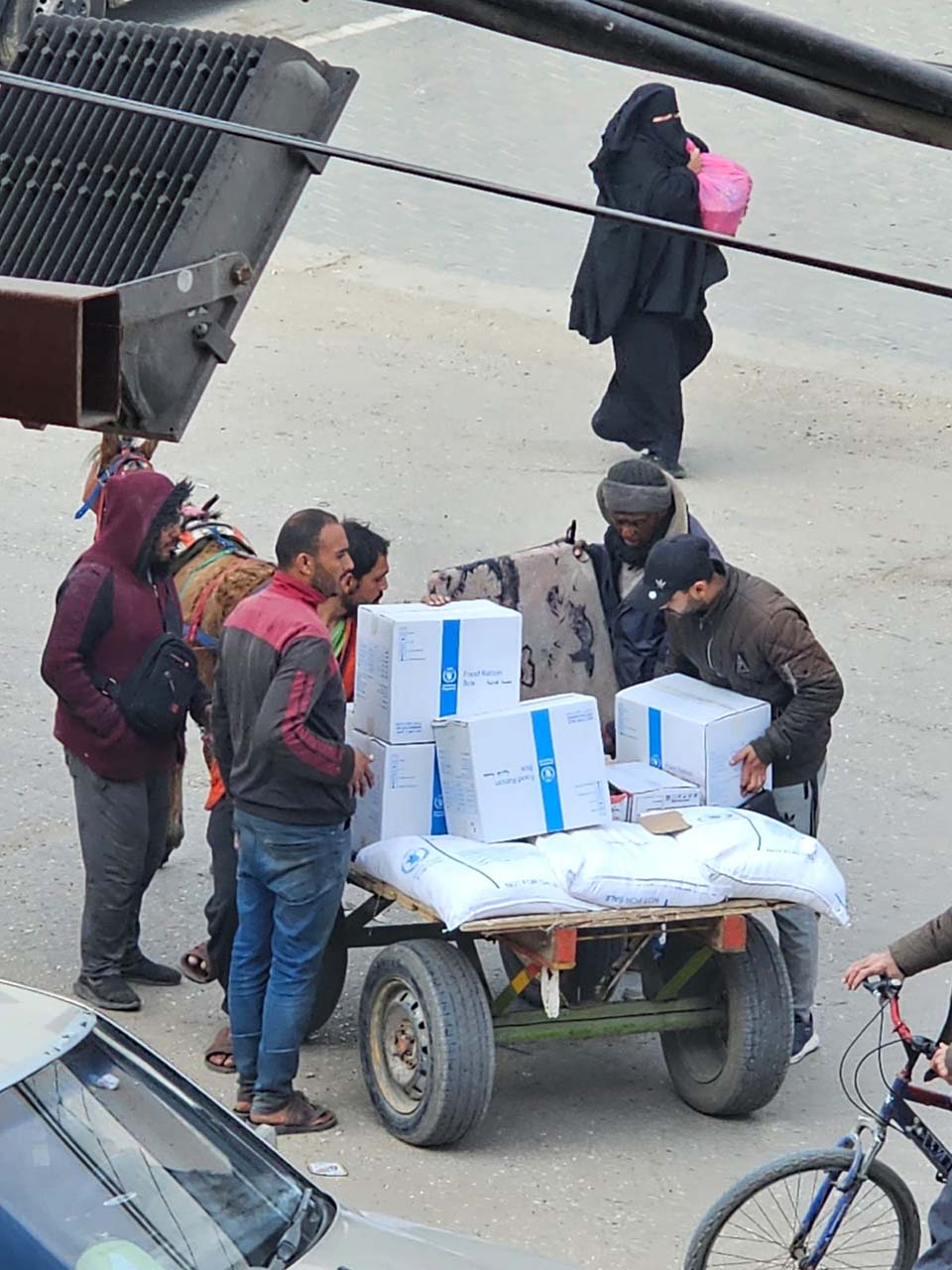
As people received distributions of food from CRS, many transported their goods via donkey cart.
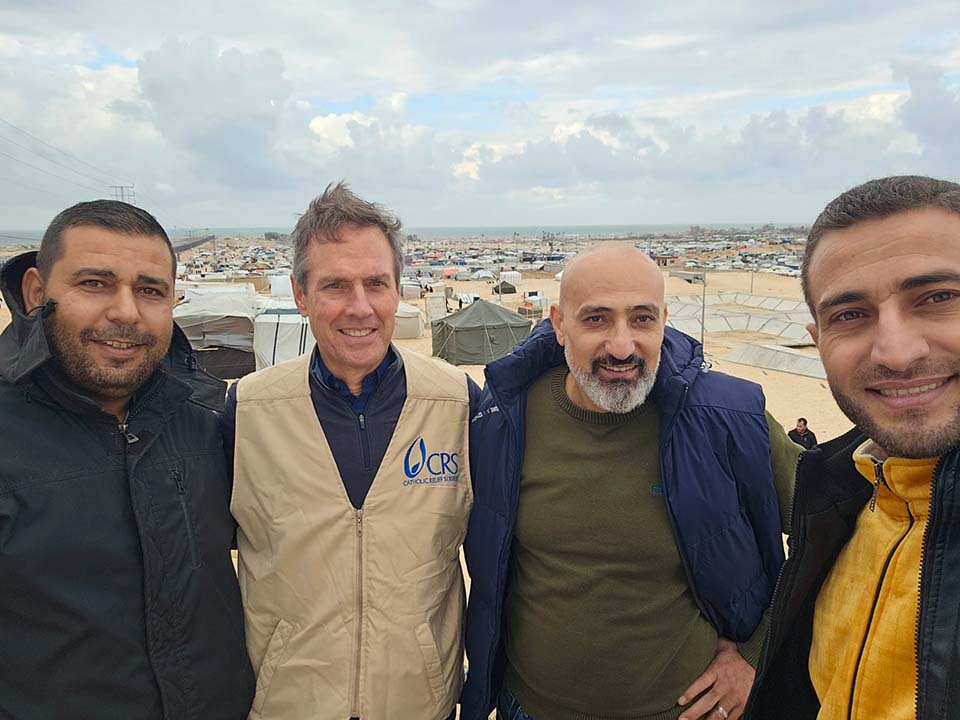
Everywhere you go, you are greeted with a welcoming smile. And although you see the smile on the faces, when you look closely, you see that their eyes have a sadness. You can feel the difficulties that people are going through. But they're out there with the people—and there is this genuine sense of moving forward.
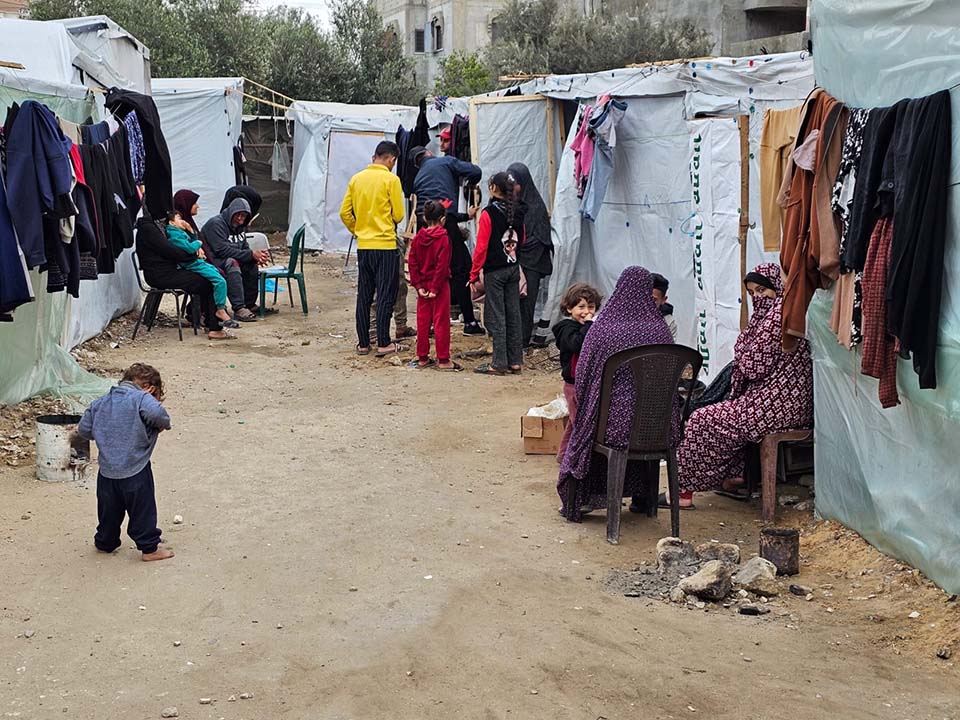
We visited communities where help is greatly needed—where families were forced to come from areas in the north—many of them with only the clothes that you see on the line behind them. This might be the fourth or fifth time they have been displaced since the war began, and they don’t know where to go. We'd see families being dropped off just sitting there saying, “What do we do now?”
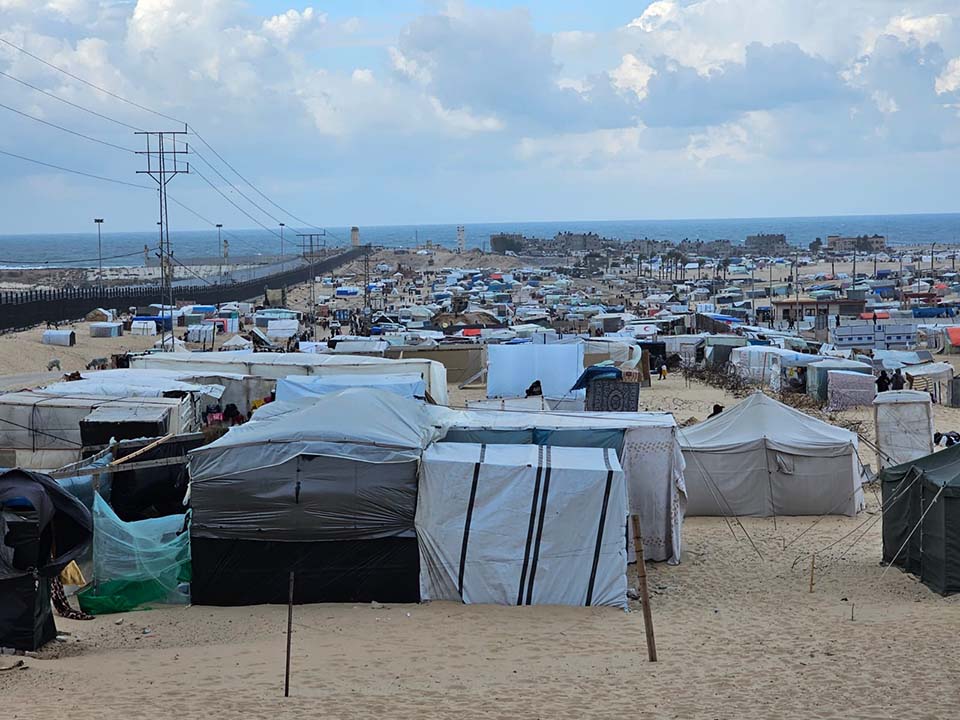
I saw a rainbow when we were visiting some of these areas and I thought maybe this was good luck. But, when I said that to my Gazan colleagues, they said, “No, a rainbow is not good luck for these families because it means it will start rain, and all of their belongings will get soaked.”
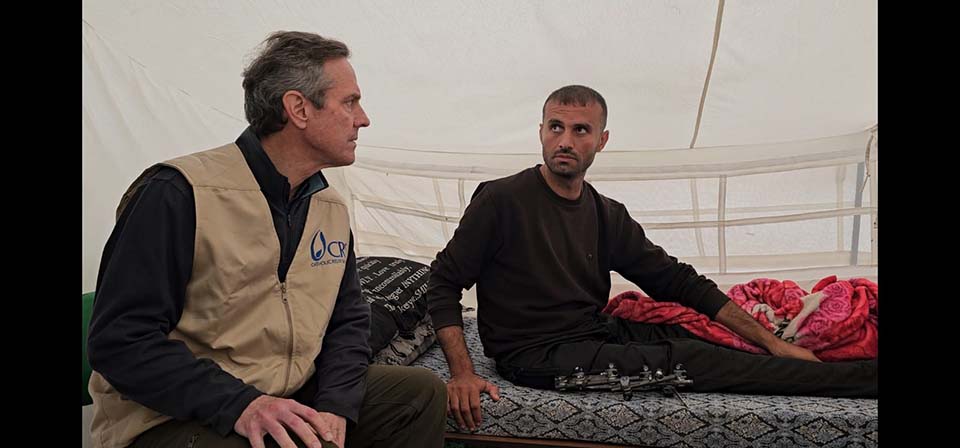
We visited a tent where one of our Caritas partners had been providing shelter support. I sat with a young man who is a day laborer. Unfortunately, his thigh was severely injured from a shelling. He was struggling with the pain and is in need of another operation. As we talked about his family, I couldn’t imagine how challenging it would be to do the most basic things, like standing up, caring for a young child or trying to use to a latrine. I asked him, “How are you supporting yourself at this time?” And, he said, “From your food.” It showed me how our team on the ground is identifying the people most in need.
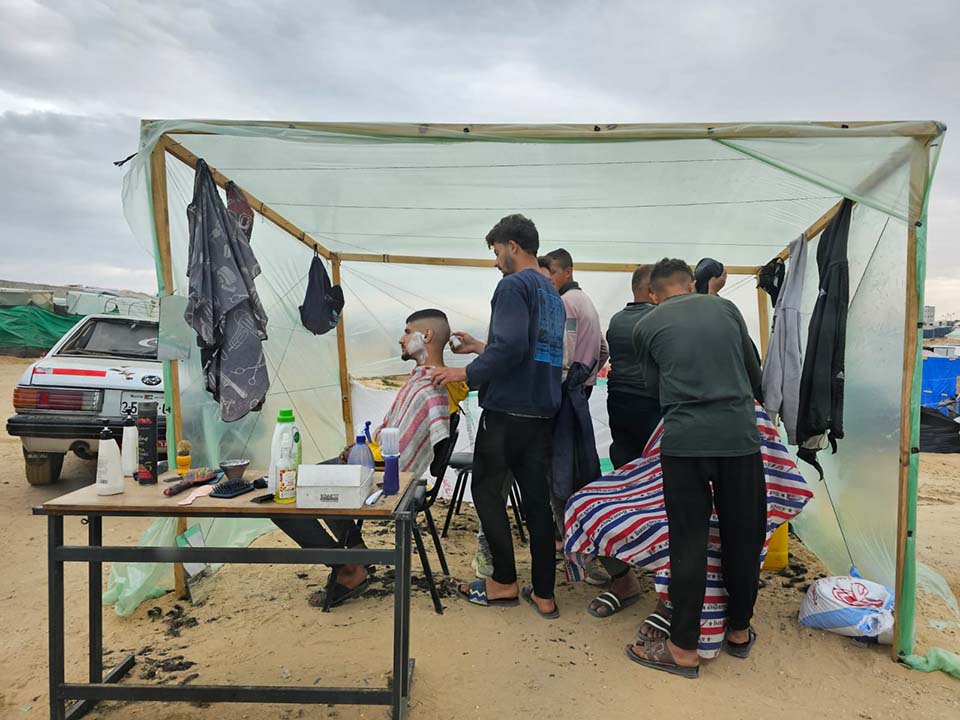
Being hosted by my colleagues—while they are simultaneously affected by crisis and responding to it—was humbling. Although the situation is horrific, people have hope for the future. They have created markets. You see in this photo a makeshift barbershop in the tent city. We saw stores. People are hopeful that, moving forward, they'll have opportunity.
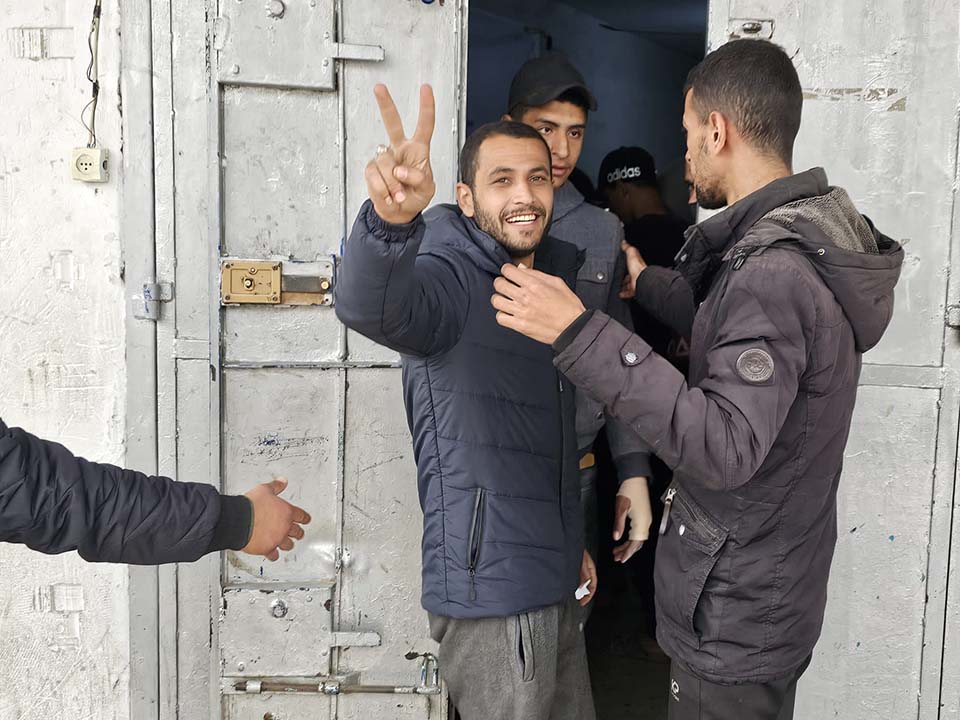
The resilience of the people of Gaza inspired me deeply and makes me think about how we can set an example for bringing people together—people of different faiths, countries and languages working together and staying resilient despite the situations they are enduring, the violence they are subjected to—and still calling for peace for all people. We have to ensure that we are working to strengthen the capacity of local communities—and that we are looking within our own countries to observe whether we are doing what is admirable. For those of us in the United States, we need to keep pushing to make sure our country does the right thing—to be sure to say the truth and speak truth to power.
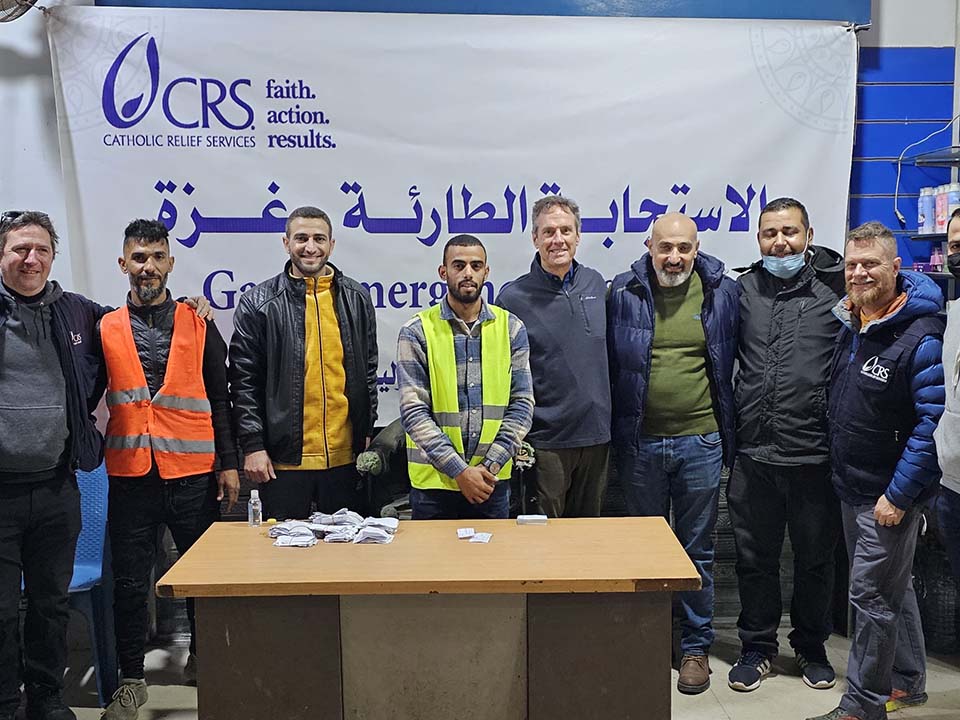
I left Gaza feeling that our Gazan team are truly heroes, and each one has a unique and tragic story. Despite the stress, pressure, anxiety and loss, they are out there helping others who are in need. You would all be proud.
- Sean Callahan

